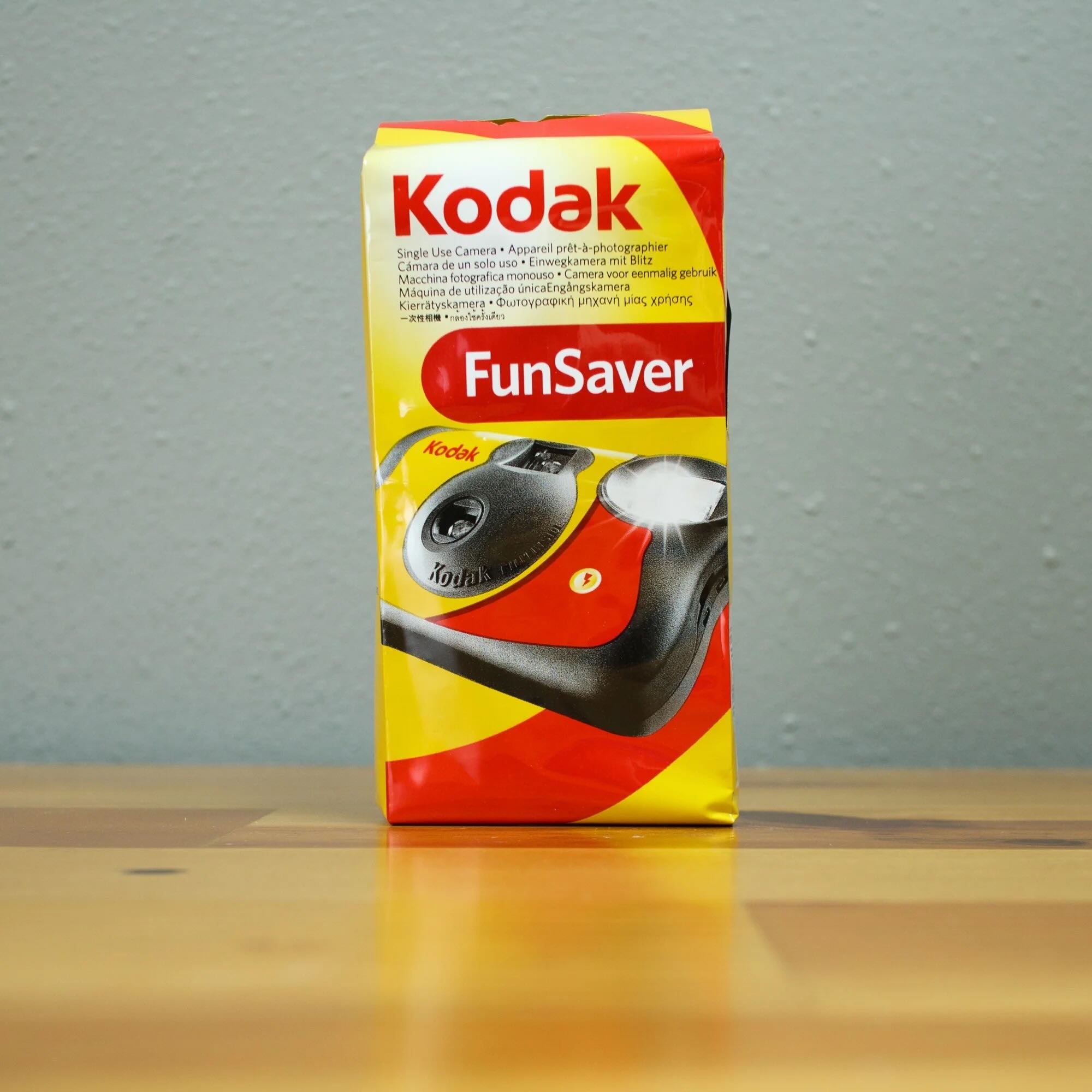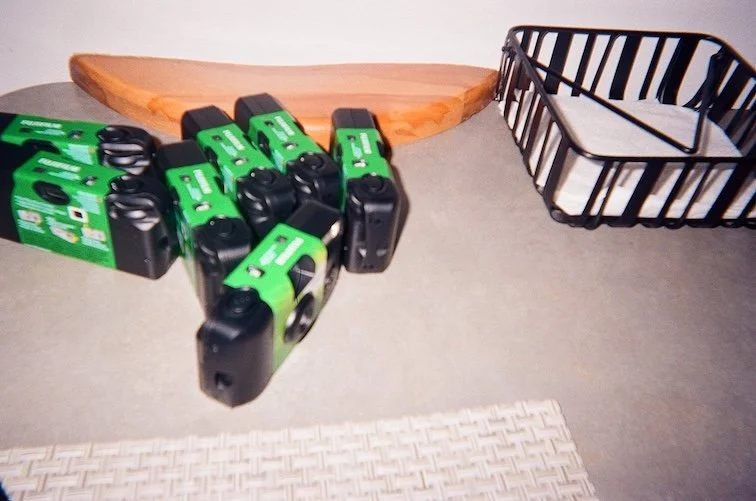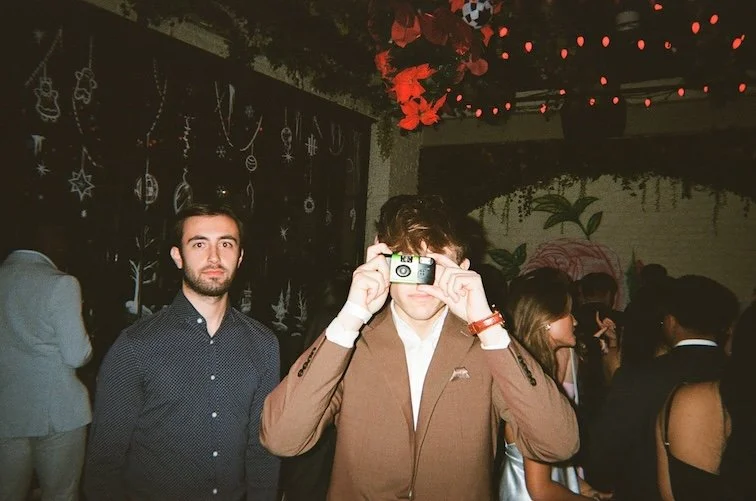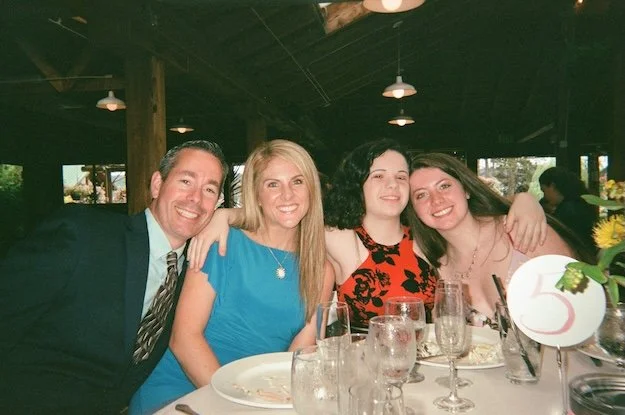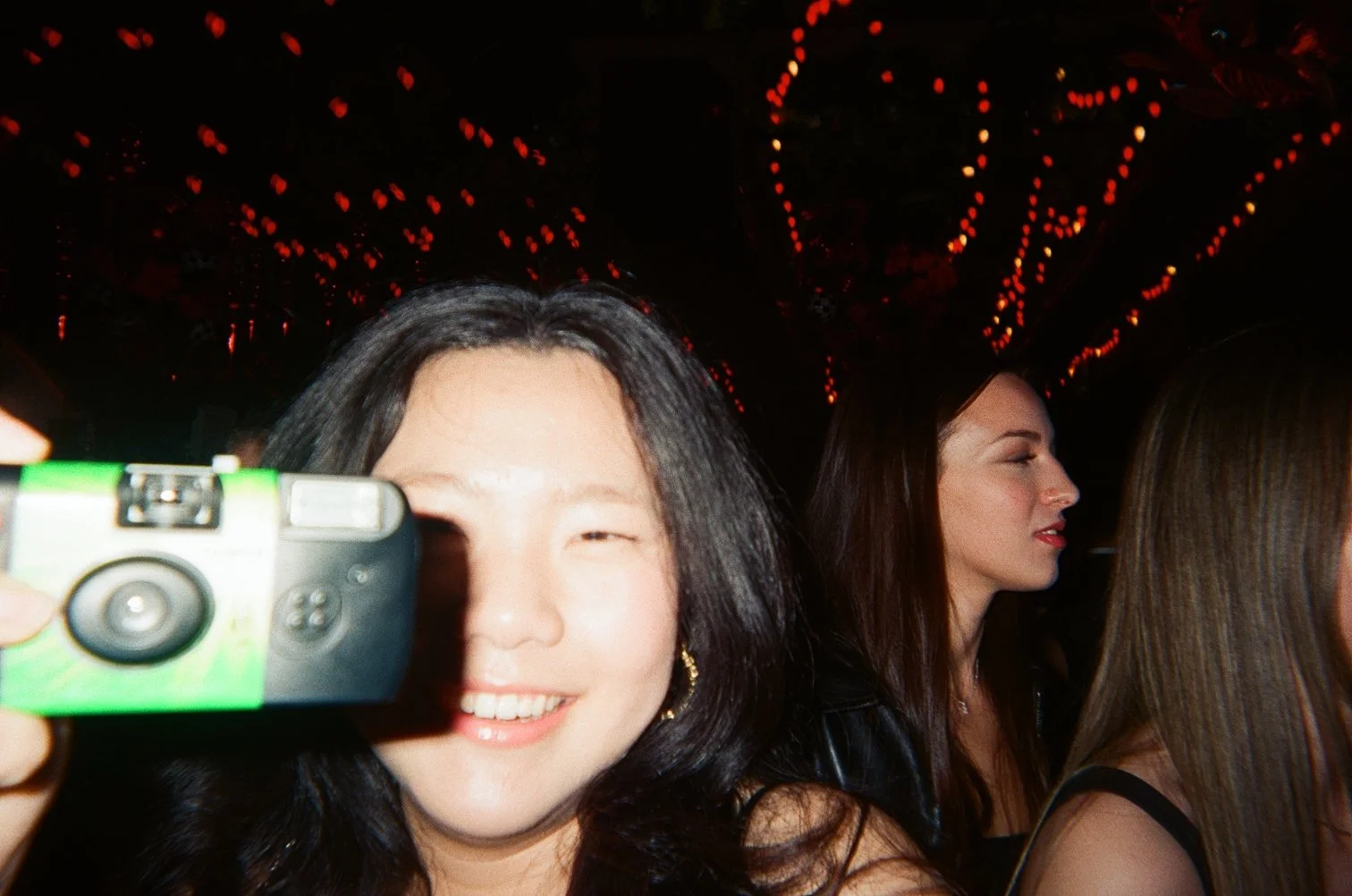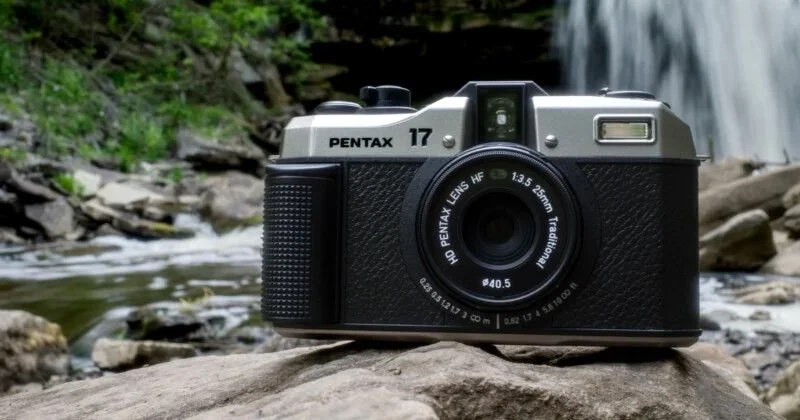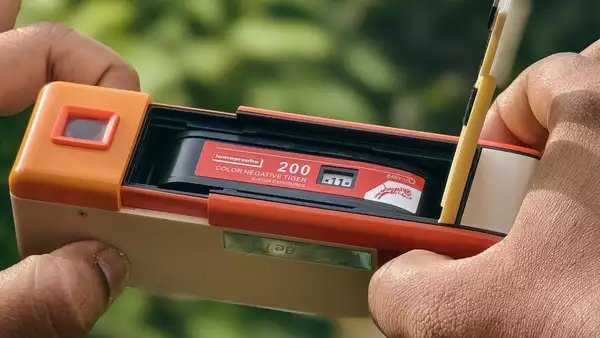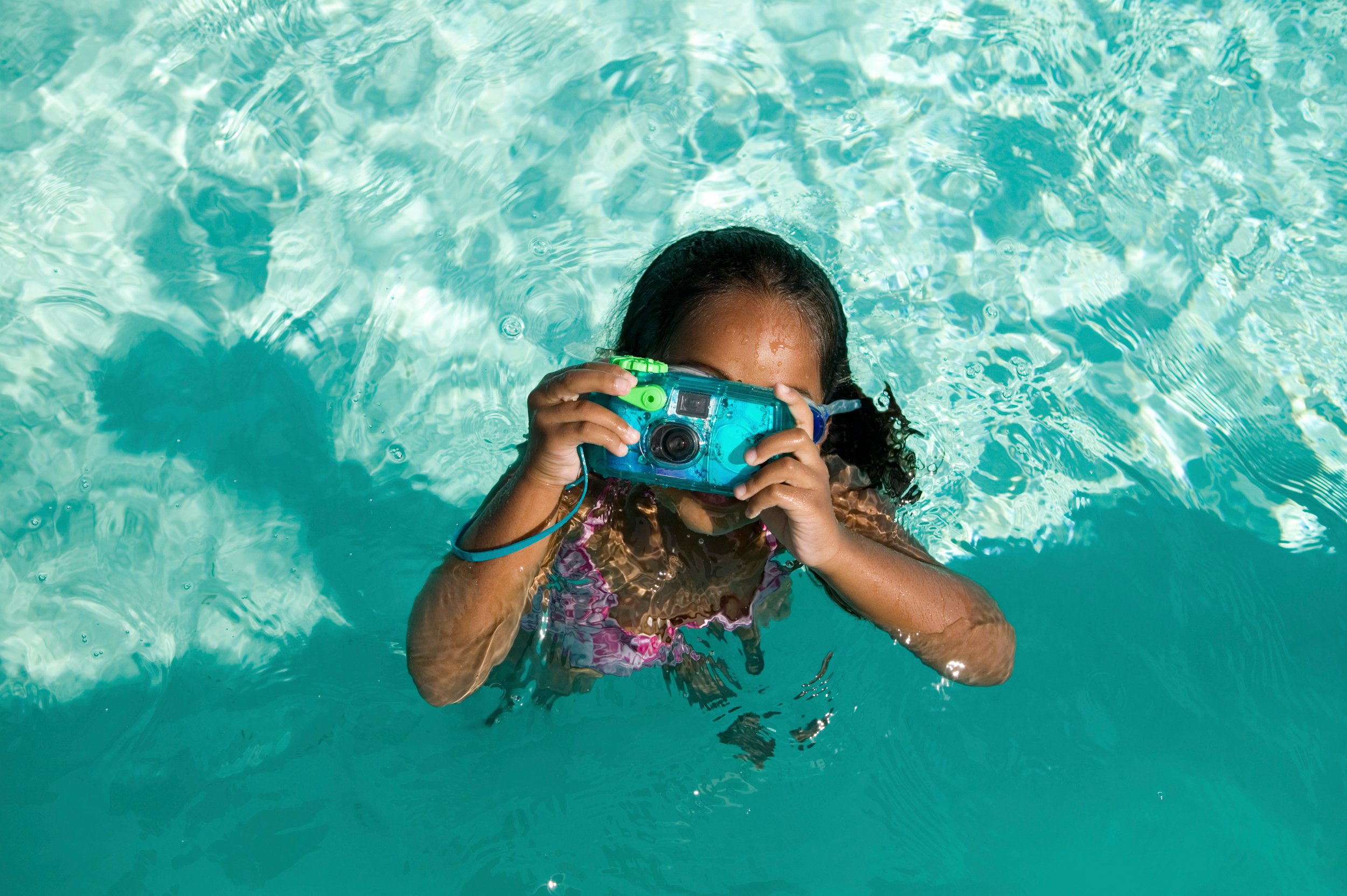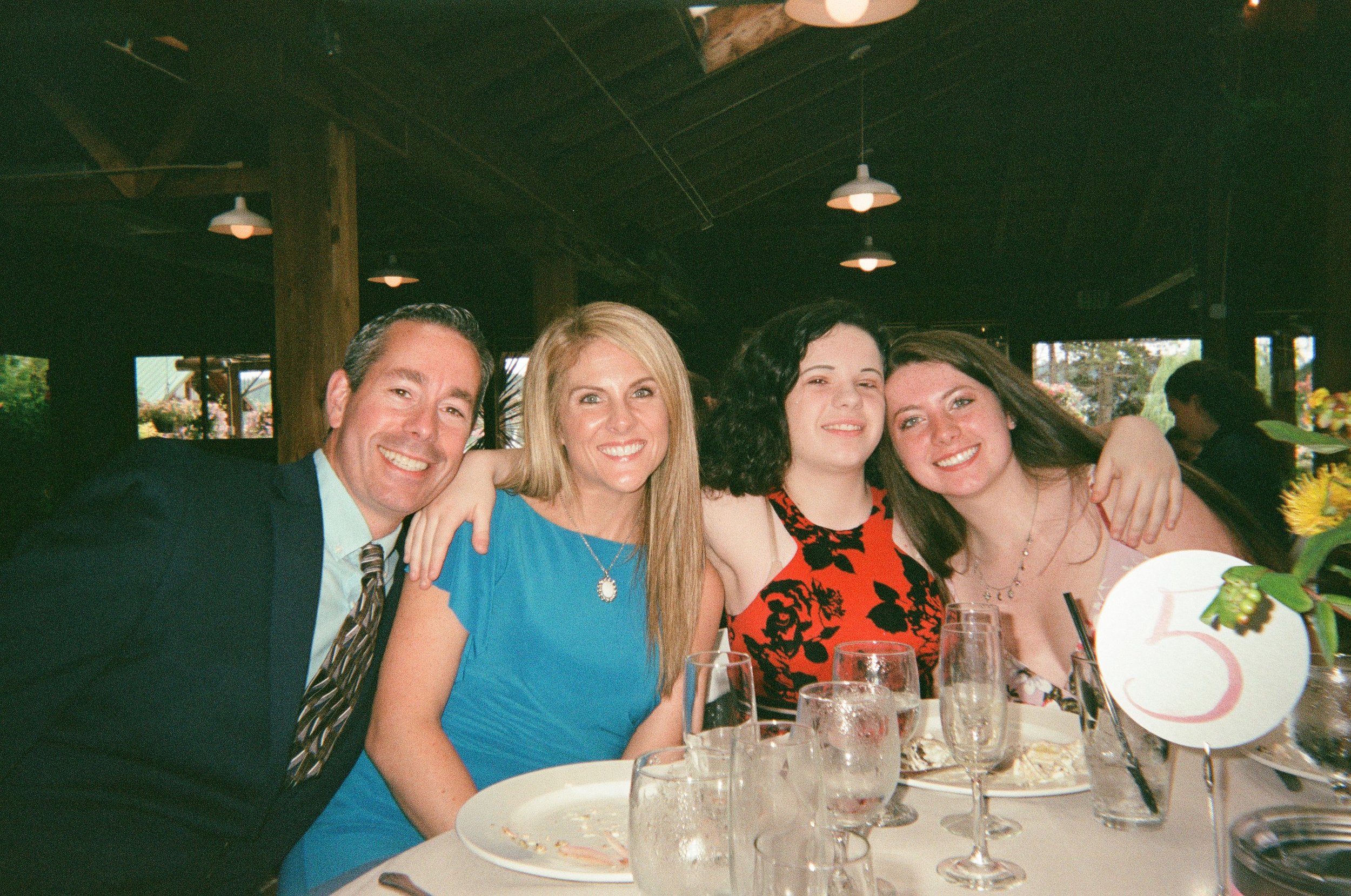Light Lens Lab Makes a Surprise Announcement about New Film
A big announcement from Lens Light Lab says that they’ve got new film products coming!
The analog photography world was shocked this week when Light Lens Lab, a design and manufacturing operation located in China announced that they would be working towards the production of new photographic and cinema films. Light Lens Lab has been producing affordable reproductions of Leica lenses for a while and this move into film production was unexpected. Light Lens Lab mentioned that this new venture was made possible by the development of a new machine that they had developed that could apply the emulsion to the film in a proprietary process that would make them “self-sufficient”. They listed several types of film that they are planning to produce. Here’s the list:
Black and White film with T-Grain Structure, with speeds ranging from 100 to 1600
C-41
E-6
Instant Peel-Apart Film
ECN-2 for cinematography
And more in the future
What the Lens Light Lab Announcement Means for the Future of Film?
The photographic film industry has been struggling for years. Even after the pandemic brought about a revival in shooting film, the industry has been slow to catch up and even declining in some cases. Photographers and photography hobbyists have been buying more and more film with each passing month but companies like Fuji Film has been discontinuing extremely popular product lines.
2024 brought us some promising news from Kodak as they are making additions to their production facilities and similar news also came from Ilford who is also adding production space. Ilford’s parent company, Harman released a new color film under the Phoenix name in 2024 as the first beta test in their venture into color film. Lucky film company out of China along with this venture from Light Lens Lab means that for the first time in decades, film scarcity might not be a problem has it has often been in the past several years.
This announcement ultimately means a wider variety of products available and competition that will hopefully keep prices in check.
Lens Light Lab is Bringing Back Peel-Apart Film!
Something that caught everyone’s attention was the mention of bringing back peel-apart film. The beloved instant photography format was discontinued by Polaroid once, and then by Fuji. I never got the chance to shoot Polaroid Peel-Apart film, but I absolutely loved Fuji’s FP-100C and FP-3000B. Both were amazing and combined with a Polaroid Land Camera could produce some absolutely beautiful images. I’ve written about Peel-Apart Film before, you can can check that blog post out HERE.
There have been rumors for years that different companies were bringing back peel-apart film. One-instant has an offering out there that works, but is a tad messy and sloppy. A new peel-apart film on part with what Fuji was making would mean the world to all of us photographers out there holding on to our Polaroid Land Cameras in the hopes that someone would one day resurrect the format.
A New Cinema Film from Lens Light Lab!
Right now, Kodak is the only company manufacturing cinema film. And thanks to an agreement between a group of amazing directors, studios are still buying lots of 35mm and 65mm film for movies. Photographers also actually love using cinema film. It has a different feel and look to you. Cinestill has been selling cinema film without the remjet for years now. And until recently, a lot of photographers were buying cinema film directly from Kodak in 400 and 1000ft rolls and bulk-loading the film ourselves. I was one of these photographers and I absolutely LOVE shooting with Kodak 500t. It’s honestly one of my favorite film stocks. But sadly, Kodak has began restricting the sale of cinema film to non-production companies. We’ve been cut off from our cinema film supply, so a new cinema film from Lens Light Lab would give all of us cinema film shooters a new chance to shoot it again.
The big difference with shooting cinema film directly from Kodak rather than from Cinestill is that the remjet layer has been removed in the Cinestill products to make it possibly to develop it using the C41 process. I actually prefer to use the ECN-2 process, which is what cinema film was designed to be developed in. I’m really excited about the possibility of having a new cinema film to shoot with!
Lens Light Lab is Planning to Develop an E6 Film!
Over the past decade, we’ve seen slide film disappearing from manufacturers catalogs left and right. Kodak had even at one point cancelled its Ektachrome film. As the demand for film began to increase, Kodak brought a slightly different version of their beloved Ektachrome back, just as Fuji was completely getting out of the slide film business. Ektachrome is an amazing film but it’s very expensive, the possibility of having another option of E6 film to shoot is exciting! While E6 film is not nearly as popular as black and white or color negative film, it’s still considered one the most appealing films to shoot. I can’t wait to see what Lens Light Lab is able to produce.
Now the Hard Part… We Wait
The excitement is almost overwhelming, but we are probably a good ways away from having products in hand. Lens Light Lab didn’t give us a timeline for product release, but they did let us know that these products will definitely be sold under a new brand name, not under the Lens Light Lab moniker. The good thing is that they have been a very innovative and consistent company so we at least know there’s something in development. If you’d like to read more, go check out their original blog post HERE.
And check back here and their website often to stay up to date on any future announcements!
Can You Use Expired Film? A Guide to Shooting Expired Film
A quick guide to shooting with expired film.
Film photography has experienced a renaissance in recent years, and with it comes curiosity about using expired film. We’ve been developing expired film almost daily at our photo lab and while we expected the expired film rolls to slowly decrease, we’re discovering that more and more rolls keep coming in! People are shooting a lot of expired film and we’ve observed a lot in the process of developing it for our customers.
Whether you stumbled upon a vintage roll in a family drawer or are tempted by discounted expired film online, you may wonder: can you use expired film? Let’s dive into everything you need to know, including how to shoot expired film and what to expect.
What Is Expired Film?
Film comes with an expiration date, typically found on the box. Sometimes it’s printed on the canister but that is pretty rare. Most film is given two years from its manufacture date before it expires, but some film types have a three year expiration. Manufacturers set these dates to guarantee optimal image quality. Once past its expiration date, film may still work but with potential changes to:
Color and Contrast: Colors may shift or fade, and contrast could be reduced.
Grain: Increased graininess is common in expired film.
Sensitivity: Older film will lose sensitivity to light, requiring adjustments to exposure.
Can You Use Expired Film?
Yes, but with caveats. Expired film can produce some unpredictable results. The images will definitely be unique and some people view the results to have some artistic value, but its usability depends on factors like storage and age. There is a significant love of the faded and grainy look that expired film can give. But in our experience, having developed thousands of rolls of expired film, just flat out bad results far out number the good ones. Here are some things to think about before buying and using expired film:
Storage Conditions: Film stored in cool, dry environments (like a refrigerator or freezer) fares better over time compared to film exposed to heat and humidity. Film exposed to heat, temperatures over 85 degrees fahrenheit, becomes significantly more grainy and the colors shift to some pretty bizarre tones. There can also be some “burning” along the top and bottom edges of the film because of the radiating heat from the metal canister.
Age of the Film: Film expired within the last few years is more reliable than film decades past its expiration date. The older the film gets, the hard it is to produce a decent image.
Type of Film: Black-and-white film tends to age more gracefully than color film or slide film.
How to Shoot Expired Film
Shooting expired film requires some preparation and experimentation. Follow these tips to get the best results:
1. Adjust Your Exposure Settings
Overexpose the Film: A general rule is to overexpose expired film by one stop for every decade past its expiration date.
Example: If the film’s box speed is ISO 400 and it expired 10 years ago, shoot it at ISO 200.
2. Test a Single Roll First
Start with one roll to understand how it performs before committing to a large batch.
You can make adjustments to how your exposing after seeing how the test roll turns out to get better results
3. Consider the Film Type
Black-and-White Film: Often more forgiving and can produce interesting textures.
Color Negative Film: May show color shifts but can still yield usable images.
Slide Film (E-6): Most prone to color degradation and may require more significant adjustments. We don’t recommend using expired E-6 film once its past 5 to 10 years old.
4. Store Expired Film Properly
Keep your expired film in a refrigerator or freezer to slow down further degradation.
Allow refrigerated film to reach room temperature before use to avoid condensation.
5. Embrace the Imperfections
Understand that expired film may produce unpredictable results, such as:
Faded colors
Unique color casts (e.g., greens, purples, or blues)
Light leaks or fogging
Pros and Cons of Shooting Expired Film
Pros:
Creative Effects: Expired film often produces unpredictable and artistic results.
Cost Savings: Expired film is typically cheaper than fresh film. You can pick expired film up from eBay, Facebook Marketplace, local thrift stores, and estate sales for a fraction of the cost of new film.
Nostalgic Feel: The imperfections can add a vintage aesthetic to your photos.
Cons:
Unpredictable Results: You may not get the outcome you expect.
Reduced Image Quality: Color shifts, grain, and fogging are common.
Developing Challenges: Some expired films require special handling during development.
Where to Buy Expired Film
If you’re intrigued by expired film, you can find it through:
Online Marketplaces: eBay, Etsy, and specialty film stores often stock expired film.
Local Thrift Shops: Occasionally, you may find vintage film in thrift stores or estate sales.
Film Photography Communities: Join online forums or social media groups where photographers trade or sell expired film.
Developing Expired Film
Developing expired film can be one of the biggest challenges. Most labs process expired film just like every other roll that comes in our experience, old film needs some special care during the developing process. Our lab, Shutter Junkies Photo Lab processes a lot of expired film and we’ve developed a special process for getting the absolutely best results possible. We identify old film rolls when they arrive and put them in a separate work flow designed to pull as much of an image as possible from your expired roll. When you get ready to develop your expired film rolls, just click the link below to get started with the expired film developing experts!
Final Thoughts on Expired Film
Using expired film is a rewarding experience for those who enjoy experimenting with film photography. While it’s not always predictable, the results can be uniquely beautiful and nostalgic. By understanding how to shoot expired film and making the right adjustments, you can unlock a world of creative possibilities.
So, can you use expired film? Absolutely! Grab a roll, set your camera, and embrace the beauty of imperfection.
What is a Use and Throw Away Camera - Everything You Need
Throw away cameras are a fun and affordable way to take great photos. When compared to more expensive and bulky digital and film cameras, disposable cameras are rugged and durable and work great in almost any situation.
I own a lot of cameras and I love taking them with me when I venture out into the world. Trips with the kids to the zoo, amusement parks, camping, hiking, exploring communities and just heading out to the park or a night out at a concert are great places to take photos and make memories. But taking my super expensive mirrorless camera or even one of my older DSLR’s is somewhat of a pain and a source of anxiety. Bulky, heavy, and difficult to store while you're enjoying the moments make them ridiculous. Something smaller like a point and shoot digital or film camera is lighter and easier to cary around, but they are still expensive and if its a film camera not very easy to replace if they were to get stolen or broken.
The good news is that disposable cameras are still being produced and are cheap, rugged, and take really great pictures that have a very unique look. A use and throw away camera is the perfect choice for so many events! Let’s explore this topic in a little bit more detail!
What is a Use and Throw Away Camera?
Disposable cameras have been around for decades now. They became extremely popular during the 1980’s and 1990’s and have remained popular even after the film apocalypse occurred. These cameras are made of durable and rugged plastic and have a very simple film winding and shutter mechanism as well as a simple yet powerful flash. Disposable cameras were originally designed to go places nicer, more expensive, and more cumbersome film cameras could not go. Even though almost everyone exclusively uses their phone’s camera today, there are many times it would be more convenient to have a dedicated camera to keep your phone safe and secure.
These throw away cameras were designed to be trashed or recycled. Most of them have to be broken to get the film out however many companies have figured out ways to recycled almost every throw away camera type out there.
Where can you buy throw away cameras?
Several retailers still sell disposable cameras in stores! Walmart, CVS, Walgreens, and Best Buy all carry single-use cameras from Kodak and Fuji. Some larger convenience stores and gas stations might also carry them, especially around tourist areas.
You can also purchase disposable cameras online from Amazon, B&H Photo and Shutter Junkies. These cameras range in price from about $15 to $20 depending on the retail store and the type of camera you buy.
How Many Pictures does a Throw Away Camera Take?
Almost all disposable cameras have 27 exposures. There are some that have 24 and some that have 39. Usually Kodak and Fuji offer 27 exposure cameras while only Kodak offers are 39 exposure variant. Have shot A LOT of disposable cameras in my life, I can tell you that for most events, the 27 exposure camera works best. There isn’t much difference in weight and there is no difference in the style/type of camera but the 27 exposure disposable camera is a little cheaper. However if you’re at an even or traveling and you only have room for one camera but you need to take a lot of photos, definitely opt for the 39 exposure model.
How do you get the picture off of a Throw Away Camera?
Each picture is literally exposed on a roll of 35mm film. These rolls of film have to be removed from the camera safely, in a dark or controlled environment to prevent accidental exposure to light and then developed chemically to produce a negative image. The negatives will have a color reversed image that will allow you to see what the picture is of, but will need to be scanned and inverted to turn it into an actual photo. While you can do this process at home on your own, it requires a significant amount of training, equipment, and chemistry. One wrong move during the developing or scanning process could ruin your images.
For this reason, most individuals choose to send their disposable cameras to a photo lab, like Shutter Junkies to have their images developed and scanned. If you’re looking for a place to get your throw away camera developed, here’s another blog post that goes into quite a bit more detail. You can read all about “where to get my disposable camera developed” Here.
Conclusion
Throw away cameras can be fun and a great alternative for situations where a big or expensive camera just isn’t the best choice. They are rugged and durable, easy to use, and take great photos in almost any situation. A little bit of research will help you pick the right disposable camera for your event and help you figure out where to send your camera to be developed. Of course, if you have any specific questions, you can always send us an email at info@shutterjunkies.org and we will be glad to answer any questions you might have about throw away cameras!
Where Can I Develop my Half Frame Film?
What photo labs can develop half frame 35mm film? Here’s a quick overview of places that will and won’t develop your half frame film!
Half-Frame cameras have been around since the 1960’s. They became wildly popular in Japan and as Japanese camera manufacturers began to export them the appeal of the half frame picture format spread all over the globe. Whether you’re buying a vintage half frame camera or something new like the Kodak H35 or the Pentax 17, half frame cameras a fun and make shooting film way more affordable!
Where can I get my half frame film developed?
Once you’ve shot your last half frame on the roll, it’s time to get your roll developed! But sadly, getting half frame film developed isn’t as easy as a roll shot in regular 35mm film format. Photo labs have different capabilities when it comes to Half Frame format film.
Almost any lab can develop half frame film. It’s just a roll 35mm, which is the majority of what all photo labs process. But not all labs are set up to scan half frame film. If you send your film in to a lab that is unable to scan it, they will usually develop it and then just return the negatives to you unscanned, forcing you to have to find another lab that can scan your images and get them digitized for you. Many labs that process half frame film charge extra to do half frame because it can be a slow down in their usual work flow having to deal with a not common format film. To help you sort through the mess, here’s a quick overview of labs that will and won’t develop and scan your half frame film.
Shutter Junkies Photo Lab
Shutter Junkies Photo Lab will develop and scan your half frame film for only $12. You can choose to have your film scanned at a higher resolution for a few dollars more and you can add prints when you purchase processing or just order prints later. And the best thing is that Shutter Junkies does not charge extra to develop or scan half frame film!
To get started, just click here to purchase processing for a roll of 35mm film and selected your scan and print options and you’re good to go!
CVS
CVS is a popular place and very convenient for many people to just swing buy and drop their film off. Unfortunately, CVS does not process and scan half frame 35mm film. If you neglect to tell them your roll is in half frame format, they will develop it but then will send it back to you unscanned as they do not have the capability to scan half frame film.
Walgreens
Like CVS, Walgreens also does not develop and scan half frame film. If you drop your film off with them and do not tell them it is half frame, they will also develop it and then return it to you. You will then have to find another lab to get your film scanned.
The DarkRoom
The DarkRoom will develop and scan your half frame film. The base cost for developing a roll of 35mm film is $13 and you have to pay an additional $6 for processing half frame images. This brings the total to $19 per roll to get your half frame film developed at The DarkRoom. They do give you the option to choose if you would like your images scanned as individuals or in sets of two, which most labs to do not.
Walmart Photo
Walmart is another very convenient place for many photographers to drop off film. But sadly, Walmart does not process half frame film. Like CVS, and Walgreens, they will simply return your negatives to you and you will have to pay an additional fee to another lab to get your images scanned.
Reformed Film Lab
The Reformed Film Lab can develop and scan your half frame film images. Developing starts at $12 and there is no extra charge for developing and scanning half frame film, but there is an increased charge for order prints compared to ordering prints for a standard 35mm roll.
Conclusion - Where can I get my half frame film developed?
Half frame film is a fun and affordable photography format and as long as you can find the right lab to get your images developed, scanned, and printed, you won’t notice a difference between shooting regular 35mm and half frame 35mm film. Avoid big box stores like CVS, Walgreens, and Walmart as they do not scan half frame film. Also make sure and check the pricing for half frames as places like The DarkRoom charge extra to process and scan the film. There are a lot of labs out there like Shutter Junkies Photo Lab and the Reformed Film Lab that will process your images for no additional cost!
Why Disposable Cameras Are Making a Comeback in 2025
Disposable cameras are all the rage in 2025! Stores can’t keep them on the shelves and here’s a look into why!
In a world of instant gratification and smartphone photography, the disposable camera is making an unexpected yet exciting resurgence. Perfect for capturing nostalgia, creating tangible memories, and embracing the aesthetic of film, disposable cameras are winning over both new generations and seasoned photo enthusiasts.
At Shutter Junkies Photo, we’ve witnessed firsthand how disposable cameras are bringing joy and creativity to photography lovers across Greenville, TX, and nationwide.
What is a Disposable Camera?
A Quick Overview
A disposable camera is a compact, lightweight camera preloaded with film, designed for one-time use. With a simple point-and-shoot mechanism, these cameras make analog photography accessible to everyone, no matter their skill level.
How They Work
Snap your photos.
Send the camera to a lab (like Shutter Junkies Photo) for film development.
Relive your memories with beautiful printed photos.
Why Choose Disposable Cameras?
The Top 5 Reasons
Simplicity: No settings, no stress—just point and shoot.
Vintage Vibes: Film creates unique, warm tones that digital cameras can’t replicate.
Affordable: Disposable cameras are cost-effective compared to high-end digital equipment.
Tactile Joy: Printed photos offer a sentimental value that digital images often lack.
Eco-Conscious Options: Many brands now produce recyclable disposable cameras.
When to Use Disposable Cameras
Weddings
Let guests become photographers! Disposable cameras placed on tables capture candid, unexpected moments that professionals might miss.
Travel
Compact and durable, disposable cameras are excellent companions for road trips, vacations, and adventures.
Parties and Events
From birthdays to reunions, to parties, to church and school events, these cameras let everyone contribute to the memory-making process. The pictures have a distinct look and a fun and easy for anyone to use!
Everyday Fun
Enjoy the thrill of waiting to see how your photos turned out—it’s a rewarding way to slow down and savor the moment.
Developing Disposable Camera Film
Why Choose Shutter Junkies Photo?
At Shutter Junkies Photo, we’re passionate about preserving your disposable camera memories with the highest quality results.
Easy and Convenient: Drop off your cameras locally or ship them to us from anywhere in the U.S.
Expert Film Development: Our advanced equipment ensures vibrant, true-to-life prints.
Family-Run Care: We treat every order as if it were our own, offering personalized service that stands out.
How to Get Started
Purchase: Pick up a disposable camera at your local shop or favorite retailer.
Snap Away: Capture moments without overthinking.
Develop: Send your camera to Shutter Junkies Photo for premium film development and printing services.
Final Thoughts
In a fast-paced digital age, disposable cameras bring a touch of nostalgia, creativity, and fun to capturing memories. Whether you’re revisiting analog photography or trying it for the first time, disposable cameras offer a charming way to create lasting keepsakes.
Ready to Develop Your Film?
At Shutter Junkies Photo, we’re here to make your disposable camera experience seamless and memorable. Learn moreabout our services here or visit our lab in Greenville, TX, to see why we’re trusted by customers nationwide.
Tags:
#DisposableCamera
#FilmPhotography
#AnalogPhotography
#ShutterJunkiesPhoto
#PhotoDevelopment
#VintagePhotography
#GreenvilleTX
Where Can I Go to Develop my Disposable Camera?
There are actually a lot of options out there for developing disposable cameras. This blog post takes a look at those options and gives you an idea of what to look for when its time to develop your disposable cameras.
Finding a lab to develop your disposable camera can be stressful! Back before I was really into photography and way before I owned my own photo lab, I can remember worrying about just dropping my disposable camera from my latest adventures as a teen living in the 90’s in an envelope and leaving it with some 16 year old at the Walmart or CVS to develop. There’s a lot of stress and anxiety associated with trusting your memories to someone who doesn’t necessarily look like they care about their job.
But it doesn’t have to that stressful! There are a lot of labs and options out there that are professional and have great customer service! You just need to find the option that works best for you. That’s what this blog post is all about, giving you an idea of what options exist for getting your disposable camera / single use camera / throwaway camera developed!
The good news is that developing disposable cameras is a straightforward process, as they contain standard film that can be processed by most film-developing services. When choosing a service, consider factors such as cost, scan quality, print options, and whether negatives are returned.
Online Film Developing Services
Online mail-in services offer convenience and often provide higher-quality scans and prints. Here are some reputable options:
Shutter Junkies Photo Lab: Specializing in disposable cameras, Shutter Junkies offers processing and higher-resolution scans starting at $12. Prints can be ordered separately, and negatives are returned.
The Darkroom: A large online film lab with services starting at $16. They provide various scan sizes and return negatives.
Local Retailers Offering Film Development
Several national retailers provide film developing services for disposable cameras:
CVS Photo: Drop off your disposable camera at any CVS location; prints are typically ready in 7-10 days.
Walgreens Photo: Offers film roll processing with options for prints from disposable cameras.
Walmart Photo: Provides processing for disposable cameras, with prints available for pickup in approximately 6 days.
Considerations When Choosing a Service
Price: Compare costs, including any additional fees for scans or prints.
Scan Quality: Higher-resolution scans are preferable for printing and archiving.
Print Options: Determine if prints are included or if they can be ordered separately.
Negatives: Check if the service returns your negatives for future use.
By evaluating these factors, you can select a film-developing service that best fits your needs, ensuring your disposable camera photos are processed to your satisfaction.
Of course, we’d love to develop your disposable camera for you! You can always head over to our Film Developing Page to find out more. Or send us an email at info@shutterjunkies.org if you have any questions! Even if you don’t choose to send your cameras in to us for processing, we’d be happy to help you find the right lab for you!
The Rise of Half-Frame 35mm Cameras - Fun and Affordable
Everyone is switching to half-frame 35mm cameras! With so much enthusiasm growing around the format, is it time for you to switch?
In a world where film photography is making a vibrant comeback, half-frame 35mm cameras have carved out a unique niche. These compact, efficient, and creatively versatile cameras are ideal for photographers looking to get more out of every roll of film. If you’re curious about half-frame film cameras or considering adding one to your collection, this guide will walk you through their benefits, popular models, and how to make the most of this innovative format.
What is a Half-Frame 35mm Camera?
A half-frame camera is a type of 35mm film camera that takes smaller, rectangular images—usually 18x24mm—rather than the standard 24x36mm frame size. This means you can fit twice as many shots on a single roll of film. For instance, a standard 36-exposure roll will give you 72 exposures when used with a half-frame camera.
Benefits of Shooting with Half-Frame Cameras
More Shots per Roll: Stretch your film budget by doubling your exposures. Half-frame cameras are perfect for experimenting or documenting trips without worrying about running out of film.
Compact Design: Many half-frame cameras are smaller and lighter than their full-frame counterparts, making them great for travel and everyday carry.
Creative Storytelling: The half-frame format lends itself well to diptychs and sequential storytelling. With two frames side by side on a strip of film, you can create visual narratives that stand out.
Distinct Aesthetic: The smaller negative size results in slightly grainier images with a retro look, adding charm and character to your photos.
Popular Half-Frame Cameras
If you’re ready to dive into the world of half-frame film photography, consider these iconic models:
Olympus Pen Series: Arguably the most famous line of half-frame cameras, the Olympus Pen series offers everything from fully manual options (like the Olympus Pen S) to automated point-and-shoots (like the Pen EE).
Canon Demi: Another classic, the Canon Demi series includes simple, stylish half-frame cameras with sharp lenses and reliable mechanics.
Agfa Parat I and II: Known for their build quality and unique design, Agfa’s Parat series is perfect for those seeking a vintage aesthetic.
Ricoh Auto Half: This camera stands out with its sleek design and automatic film winding, making it incredibly easy to use.
Pentax 17: This brand-new camera has quickly become a favorite amongst half-frame photographers! Its high-quality lens and sturdy construction have quickly earned it a place in the hearts of those in the half-frame community.
Tips for Shooting with Half-Frame Cameras
Plan Your Pairings: Use the diptych format to your advantage by planning compositions in pairs—think before-and-after shots, complementary colors, or contrasting subjects.
Embrace Grain: Since half-frame negatives are smaller, grain is more noticeable. Use it as a creative tool to enhance the film’s vintage feel.
Light Matters: Half-frame cameras often come with fixed or limited aperture options. Shooting in well-lit environments will yield better results, though experimenting with flash can create fun effects.
Experiment with Film Stocks: Try different types of film to see how they interact with the smaller negative size. High-contrast black-and-white stocks can deliver stunning results.
Developing and Printing Half-Frame Film
Developing half-frame film is the same process as standard 35mm film, but scanning and printing may require special attention to preserve the unique diptych layout. At Shutter Junkies Photo, we specialize in developing and scanning half-frame film, ensuring your images retain their intended sequence and aesthetic. Whether you’re shooting locally in Greenville, TX, or sending your film nationwide, we provide expert service to bring your half-frame creations to life.
Why Half-Frame Cameras are Perfect for Film Enthusiasts
For those looking to maximize creativity and economy in their film photography, half-frame cameras offer an unbeatable combination of efficiency and artistry. They’re a perfect gateway into film photography for beginners and a refreshing challenge for seasoned photographers.
Explore Half-Frame Film Photography Today
Ready to give half-frame cameras a try? Whether you’re picking up a vintage classic or exploring new storytelling techniques, half-frame film opens up a world of possibilities. Explore our blog for more tips on shooting film, or visit Shutter Junkies Photo to stock up on film and develop your next masterpiece.
Discover the charm of half-frame cameras and start telling your stories one pair at a time.
Where Can I get Half Frame Film Developed?
Where can you send your half-frame 35mm film to be developed and scanned? Let’s take a look at the half-frame options out there.
The film photography world was ecstatic yesterday as Pentax announced their new film camera, the Pentax 17. It’s been so long since a new, high quality film camera was released, photographers all around the world rejoiced with the announcement. There was one small detail however, the Pentax 17 is a half-frame 35mm camera…
What is a Half Frame 35mm Camera?
A half-frame 35mm camera is unique as it only uses half of the traditional 35mm frame. So you actually get two pictures for every one frame. If you have a 24 exposure roll, you’re gonna get 48 pictures. If you have a 36 exposure roll, you get 72. With the rising prices of film and everything else rapidly inflating in price right now, more pictures for the same money is definitely a good thing!
Essentially, half-frame 35mm film cameras function just like a full-frame 35mm, except that the images that it takes are portrait aspect rather than landscape. To get a landscape image, you will need to rotate your camera 90 degrees. The view finder matches the framing of the camera so you can see exactly what you are getting, but it is a difference that takes some photographers a little bit to get used to.
There are currently a lot of new half-frame cameras on the market. The Kodak Ektar H35 is probably the most popular. But all of these half frame offerings, including the Kodak H35, are very cheaply made cameras offering similar quality to a disposable camera. Plastic lenses, fixed focus (or focus-free camera), fixed aperture all adds up to a very limited point and shoot experience. While these cameras are adequate, we develop a lot of film shot through these cameras and we can tell that there is definitely a lack in quality. Soft focus along the edges, chromatic aberation, and slow shutter speeds really hurt the quality of these cameras. This new Pentax 17 brings a significantly higher level of quality to the half-frame 35mm world and with it’s afford $499 purchase price, hopefully this camera will serve as a gateway for many amateur film photographers to step up into a much better camera.
How is Half-Frame 35mm Film Developed?
There is no difference in how you develop half-frame 35mm film. The film is developed according to its prescribed process (c41 for color negative, E6 for slide, etc). Since all of the film is ran through the developing chemicals, the size of the frame has no effect on the developing process. Where the process does differ is the scanning process. Not every scanner can accommodate the half-frame 35mm format. Some labs will scan two half-frame pictures at once. Some will just refuse to scan the film all together. For most photo labs, developing 35mm half-frame film is a huge pain as it disrupts the normal 35mm workflow.
If you’re developing your own 35mm film at home and scanning yourself, then you will definitely need to make adjustments in your scanning workflow. If you’re using a flatbed scanner, make sure you’re using a software that will allow you to adjust the scanning frame so that you can accommodate the smaller frames. If you’re DSLR scanning your film, I currently do not know of a 35mm half frame mask that exists, so you will have to take pictures of two frames at once and edit in Lightroom or photoshop to separate the frames.
Regardless of who scans your film, be aware that the smaller frame size will mean a reduced image size.
Where can I get half-frame 35mm film developed?
As we started above, every lab can develop it, but not every lab can or will scan it. If you’re sending in half-frame 35, make sure and check with the lab first. Check their FAQ’s or just shoot them an email or stop by and ask. You will run into one of four possibilities.
They will develop and scan your half-frame 35mm film at no extra charge
They will develop and scan your half-frame 35mm film with an additional charge.
They will develop your film and return your negatives for your to scan yourself.
They will refuse to even develop your film.
If you’re investing in a 35mm half-frame camera, then you definitely need to find a location that willl process your film for minimal or no extra cost. Here’s a quick guide to some of the main labs out there and their half-frame scanning offerings:
Walmart - Develops but will not scan
CVS - Develops but will not scan
Walgreens - Develops but will not scan
Shutter Junkies - Develops and scans at no extra charge
The Darkroom - Develops and scans for $6 extra
Reformed Film Lab - Develops and scans at no extra charge
Your Guide to 110 Film Developing in 2025!
Getting your 110 film developed is easy! Lots of labs still develop and scan 110 film.
Before we talk about 110 film developing, lets take. a quick look back. 110 film was HUGE in the 80’s and 90’s. As digital came on the scene 110 film was one of the first formats that disappeared. 110 film lovers hung on for years using expired 110 film and the occasional release of hand-made batches in the hopes that someone would bring 110 film back. Now it’s 2025 and we can definitely say that 110 film is back! Lomography began manufacturing and selling 110 film several years ago and its popularity has steadily increased year after year. 110 film is affordable and its smaller form factor makes it a fun film to use on a daily basis. However, finding a place to develop 110 film can be a challenge. In this guide, we'll explore the best places to get your 110 film developed, ensuring your cherished moments are beautifully preserved.
Why Develop 110 Film?
Developing 110 film can be a nostalgic journey, offering a distinct look that digital cameras can't replicate. They smaller frame size creates an image with more grain and the direct flash that is often used with 110 film gives it a look similar to a disposable camera but uniquely its own. Its so much fun to shoot and more affordable and more convenient than 35mm film.
Whether you’re shooting an old stash of undeveloped film or are experimenting with vintage photography, developing 110 film allows you to relive memories or create new ones with a retro touch. But you don’t want to let that 110 film sit around as it decays just like 35mm film and it doesn’t take long for your images to completely disappear. Also, 110 film comes with a paper wrapping which can bleed into and damage the emulsion. Having worked in a photo lab for many years now, I can tell you that much of the damage to 110 film results from the inks on the backing paper bleeding onto the film. So don’t let your film sit around too long before you get it developed.
Where to Get 110 Film Developed
1. Local Photo Labs
Local photo labs can be a great option for developing 110 film. Many independent photo labs, particularly those with a focus on film photography, offer 110 film development services. Here are some tips for finding a local lab:
Check Online Directories: Use online directories or Google Maps to search for photo labs in your area. Look for reviews and ratings to gauge their service quality.
Visit Camera Stores: Many camera stores either provide film development services or can recommend local labs that do.
Community Recommendations: Ask in local photography groups or online forums for recommendations on where to develop 110 film.
If you’re in the North East Texas Area - you can stop by and see us at Shutter Junkies! We develop new and old 110 Film from all manufacturers and scan the negatives at high resolution giving you the highest quality image possible. While many labs are moving away from developing it, we love it, we shoot a lot of 110 ourselves and are dedicated to helping to support and keep the format alive any way we can.
2. Mail-In Services
Mail-in services are a convenient option if you don't have a local lab nearby. Several companies specialize in film development by mail, offering easy-to-use services where you send in your film and receive your developed photos by mail. Some popular mail-in services include:
Shutter Junkies Photo Lab: A small lab that specializes in 110 film, Disposable Cameras, and developing old film. 110 Film processing is only $12 per roll and includes advanced scans with the option to purchase prints.
The Darkroom: A trusted name in film development, The Darkroom offers 110 film processing with high-quality scans and prints. Get your 110 film developed for $19, which includes basic small scans. You have the option to increase the scan size and order prints.
Old School Photo Lab: Known for its expertise in vintage film formats, Old School Photo Lab provides 110 film development with a range of scanning and printing options. Old School Photo Lab Develops 110 film for $17, which doesn’t include scans. Get your 110 film scanned for an addition $10 (making it $27 for each roll).
Dwayne's Photo: With decades of experience, Dwayne's Photo offers reliable mail-in services for 110 film, ensuring your photos are handled with care. 110 developing starts at $10 per roll but doesn’t include scanning. Add scanning for an addition $5.
3. Retail Chains
Most retail chains no longer develop 110 film. After the film apocalypse occurred in the early 2000’s and 110 film began to become a more niche film format, many labs simply sold or stopped maintaining the equipment to develop and scan 110 film. Big retail chains like CVS, Walgreens, and Walmart began to only focus on developing 35mm film and dropped their support for 110 film. Retail chains might still have the ability to develop 110 film, but most can no longer scan 110 film. Many of our customers have sent us 110 film that were developed by CVS or Walgreens or Walmart but that were never scanned because they lack the ability.
But if a big retail chain is the most convenient for you, then check in store and see what their current capabilities are in regards to 110 film. Be sure to ask if they are to both develop and scan the film before you turn your rolls over to them.
4. Develop Your Own 110 Film
While many labs no longer support 110 film, it is possible to develop and scan your own 110 film. There is quite a bit of special equipment you would need as well as chemistry and the learning curve can be quite steep, but developing your own 110 film could save you a lot of money in the long run if you’re shooting a lot of it. There are many resources out there for developing your own 110 film. Check out this article by Bob Janes to get an idea of what all is required to develop your own 110 film!
Tips for a Successful 110 Film Developing Experience
Check Compatibility: Before sending your film, ensure the lab or service you choose can process 110 film specifically.
Inquire About Turnaround Time: Ask about the expected turnaround time for developing and returning your film, especially if you need the photos by a certain date.
Understand Costs: Compare prices for development, scanning, and printing services. Some labs offer package deals that can save you money.
Careful Packaging: When using mail-in services, package your film securely to prevent damage during shipping.
Conclusion
Developing 110 film can be a rewarding experience, allowing you to rediscover old memories or create new ones with a vintage flair. Whether you choose a local photo lab, a mail-in service, or a retail chain, plenty of options are available to get your 110 film developed. By following the tips and recommendations in this guide, you'll be well on your way to enjoying your 110 film photographs. Happy shooting!
The Resurgence of Analog Photography: Film is Coming Back!
Film is making a comeback! Find out why
In a world dominated by digital technology, the resurgence of analog photography might seem surprising to some. However, film photography is experiencing a renaissance, drawing both seasoned photographers and a new generation of enthusiasts back to its unique charms. Here’s why film is making a comeback and why our film lab is the perfect partner for your analog adventures.
The Unique Appeal of Film Photography
There’s an undeniable allure to film photography that digital just can’t replicate. The process of shooting with film is deliberate and thoughtful, requiring a deeper connection between the photographer and their subject. Each shot is carefully considered, and the anticipation of developing the film adds a layer of excitement that digital instant gratification simply lacks.
Film’s aesthetic qualities are also a significant draw. The natural grain, rich colors, and wide dynamic range of film create images with a distinct look and feel. These characteristics are often described as having more “soul” or “character” compared to the clinical precision of digital images. For many photographers, the tactile nature of film – from loading the camera to handling negatives – is an integral part of the creative process.
Why Film is Making a Comeback
Nostalgia and Authenticity: In an era of mass-produced, digital perfection, people are craving authenticity and nostalgia. Film photography offers a tangible connection to the past, a sense of artistry and craftsmanship that resonates deeply in today’s fast-paced digital world.
Digital Fatigue: As screens dominate our lives, the tactile, hands-on experience of film provides a refreshing break. The slower, more intentional process of shooting on film encourages mindfulness and a greater appreciation for each moment captured.
Educational Value: Learning to shoot with film can be an invaluable educational experience for photographers. It teaches the fundamentals of exposure, composition, and light in a way that’s often lost in the digital realm. For many, mastering film is a rite of passage that enhances their overall photography skills.
Community and Culture: The growing film photography community is vibrant and supportive. From online forums to local meetups, film photographers enjoy sharing their knowledge, experiences, and passion. This sense of community is inspiring more people to pick up film cameras and join the analog movement.
Why Choose Our Film Lab?
As film photography gains popularity, the need for high-quality film development services is more important than ever. Our film lab is dedicated to providing exceptional service and results, ensuring your film photography experience is both enjoyable and rewarding.
Expertise and Experience: Our team has years of experience in film development, handling a wide range of film types and formats. We understand the nuances of film processing and are committed to delivering the best possible results for every roll of film.
State-of-the-Art Equipment: We use the latest equipment and techniques to ensure your film is developed to the highest standards. Our lab maintains strict quality control, so you can trust that your images will be processed with care and precision.
Personalized Service: We believe in building relationships with our clients. Our team is always available to answer your questions, offer advice, and provide personalized recommendations to help you achieve your creative vision.
Fast Turnaround: We know the anticipation of seeing your developed film can be overwhelming. That’s why we strive to offer fast turnaround times without compromising on quality, so you can enjoy your images as soon as possible.
Community Involvement: Our lab is more than just a service provider; we’re part of the film photography community. We host workshops, events, and exhibitions to support and inspire photographers of all levels. By choosing our lab, you’re joining a community of like-minded individuals who share your passion for film.
Conclusion
The resurgence of analog photography is a testament to the enduring appeal of film. Its unique aesthetic qualities, the joy of the process, and the sense of community it fosters are drawing more people to embrace this timeless art form. Our film lab is here to support your journey, offering expertise, quality, and personalized service to ensure your film photography experience is nothing short of extraordinary.
So, dust off your old film camera, load up a roll, and rediscover the magic of analog photography. We’re here to help every step of the way.









